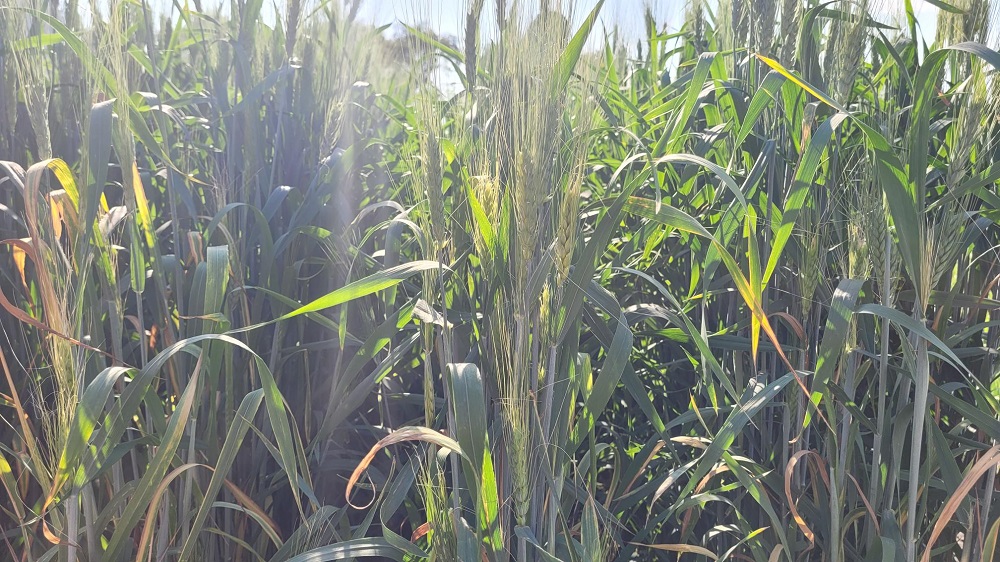There was no significant rainfall in the region over the past week. The most rain was recorded in the Moose Jaw area at 5 mm. The Alida and Glenavon areas received 3 mm and the Frobisher area 2 mm, producers are hoping this trend will continue for the following weeks so that seeding can progress.
The southeast region is starting the growing season with reassuring moisture conditions after several snowstorms hit the region throughout the winter and early spring. Cropland topsoil moisture is rated as 19 per cent surplus, 78 per cent adequate, 2 per cent short and 1 per cent very short. Hay and pasture land is rated as 7 per cent surplus, 76 per cent adequate, 16 per cent short and 1 per cent very short. Producers would like to see warm dry weather in the forecast so they can get into their fields. Rain will be needed once seeding is finished to ensure crop development and pasture growth.
There is not much field activity in the region due to wet field conditions. Most of the work is being done in the northwestern half of the region where minor seeding and spraying is underway when weather allows.
Producers in the west half of the region are already reporting that their crop land and pastures are dry and would like to see widespread precipitation.
Over the past week there were localized showers in the Gull Lake and Shaunavon areas that resulted in 21 mm of rainfall. This moisture will help crops and pastures establish themselves this spring. Topsoil ratings have improved from snowfall over the winter and the spring storm that took place in April. Producers are happy to see their dugouts recharged and fields have adequate moisture. Cropland topsoil moisture is rated as 1 per cent surplus, 83 per cent adequate, 14 per cent short and 2 per cent very short. Hay and pasture land is rated as 1 per cent surplus, 75 per cent adequate, 23 per cent short and 1 per cent very short. Even with the improved soil moisture conditions, producers would like to see it rain more regularly throughout the coming weeks.
Producers are already testing water sources on their pastures to ensure the quality is safe for livestock. Now that calving has finished, they are also moving cattle to pasture. These pastures have been slow to green up this spring after cool wet conditions and livestock producers are nervous about how well their pastures will sustain their cattle after two hard years under dry conditions.
There was minimal precipitation across the region in the last week. The Goodeve area received 5 mm while the Esterhazy area received 3 mm. Producers would prefer the rain stay away for now until they get more of their seed in the ground. An increase in daily temperature would be welcomed especially by livestock producers who are reporting their pastures have been very slow to green up.
Topsoil moisture levels look very good for the region after some adequate snowfall and cool weather aiding water retention early in the spring. Cropland topsoil moisture is rated as 5 per cent surplus, 78 per cent adequate and 17 per cent short. Hay and pasture are rated as four per cent surplus, 71 per cent adequate, 22 per cent short and 3 per cent very short. Soil moisture appears to be suitable for seed germination and there should not be any moisture concerns early on for pastures.
Livestock producers are busy trying to wrap up calving so they can move their cattle to pasture. There is little concern over water availability for livestock due to good runoff and good dugout recharge. Producers not yet seeding are busy prepping their equipment.
There were small general showers near the Marengo area with recorded rainfall ranging from 19 to 35 mm. This rainfall will help any seeded crops germinate and help pastures regrow. There were smaller showers across the region ranging from two to 13 mm, this will likely not be enough to change any of the dry conditions felt by producers in those areas. There are fire bans in place in the region and producers are reminded to be careful while conducting field activities due to the high chance of grass fires being caused by sparking or hot equipment.
Topsoil moisture conditions have greatly improved compared to the previous two growing seasons, however, producers do hope for more rain in the forecast. Cropland topsoil moisture is rated as 52 per cent adequate, 43 per cent short and 5 per cent very short. Hay and pasture are rated as 43 per cent adequate, 49 per cent short and 8 per cent very short. Pastures in parts of the western half of the region are reported to be regrowing nicely after two very dry years. Producers in other parts of the regions are wary about how long the pastures will hold their cattle and if the current water supplies will remain safe without additional rain.
Producers who can, have started moving their herds to pastures as on farm feed supplies begin to diminish. Others are busy spraying pre-seed herbicide and picking rocks to prep fields for seeding. Strong winds hampered their ability to spray for several days so producers may choose to forego the pre-seed herbicide and simply seed instead.
There was almost no precipitation this past week across the region with only a handful of producers reporting as much as 1 mm. This will help continue the drying trend in the region, but rain will be needed for the crop to further its development in the coming months.
Topsoil moisture conditions this week are rated as 3 per cent surplus, 86 per cent adequate and 11 per cent short. Hay land and pasture levels were rated as 2 per cent surplus, 82 per cent adequate and 16 per cent short. As of right now, crops have all they need to germinate and emerge, but rains will be needed if temperatures warm up in the coming weeks. Pastures are beginning to green up nicely in the region and livestock producers will be getting their cattle ready to be moved out to graze shortly.
Producers are busy seeding, applying anhydrous or carrying out other field work to get ready for when they can enter their fields. Those who have not started seeding are getting their equipment ready so they can get out and seed as soon as the fields are ready.
They would still appreciate some rainfall. There are many producers reporting their dugouts did not adequately fill from the spring runoff and some are already having issues with their water quality for their livestock and spraying.
Very small, scattered rainstorms crossed the region over the week resulting in some minor precipitation that could not be registered in a rain gauge. If the dry windy conditions continue, crops in the region may face development challenges. Cropland topsoil moisture conditions are rated as 57 per cent adequate, 39 per cent short and 4 per cent very short. Hay and pasture land is rated as 50 per cent adequate, 41 per cent short and 9 per cent very short.
Producers continue their seeding, spraying and harrowing operations as the weather allows. Others will begin to move their cattle to pasture as the grass begins to green up. All producers are reminded to take precautions in their croplands and pastures as fire risk is high.








